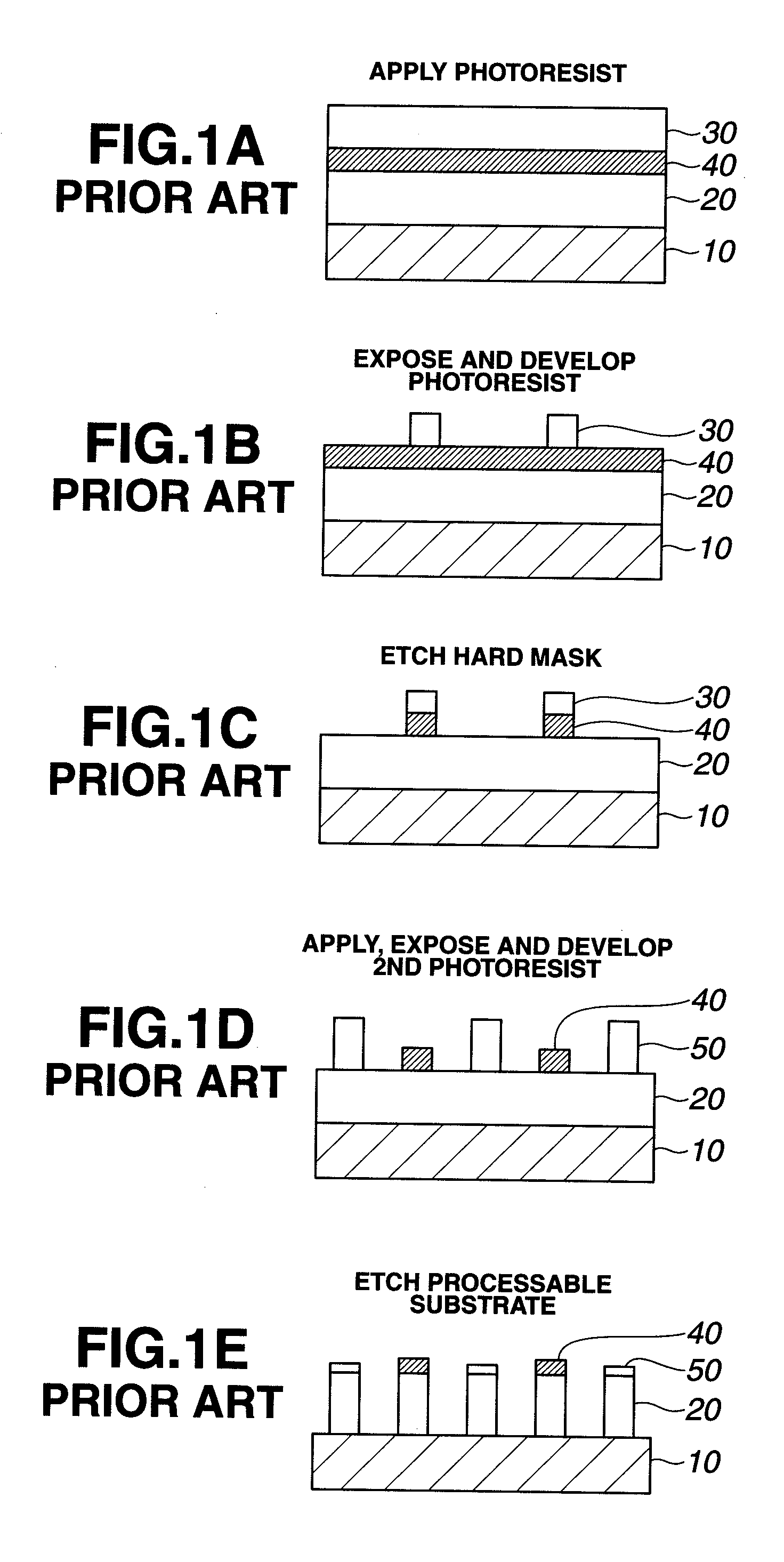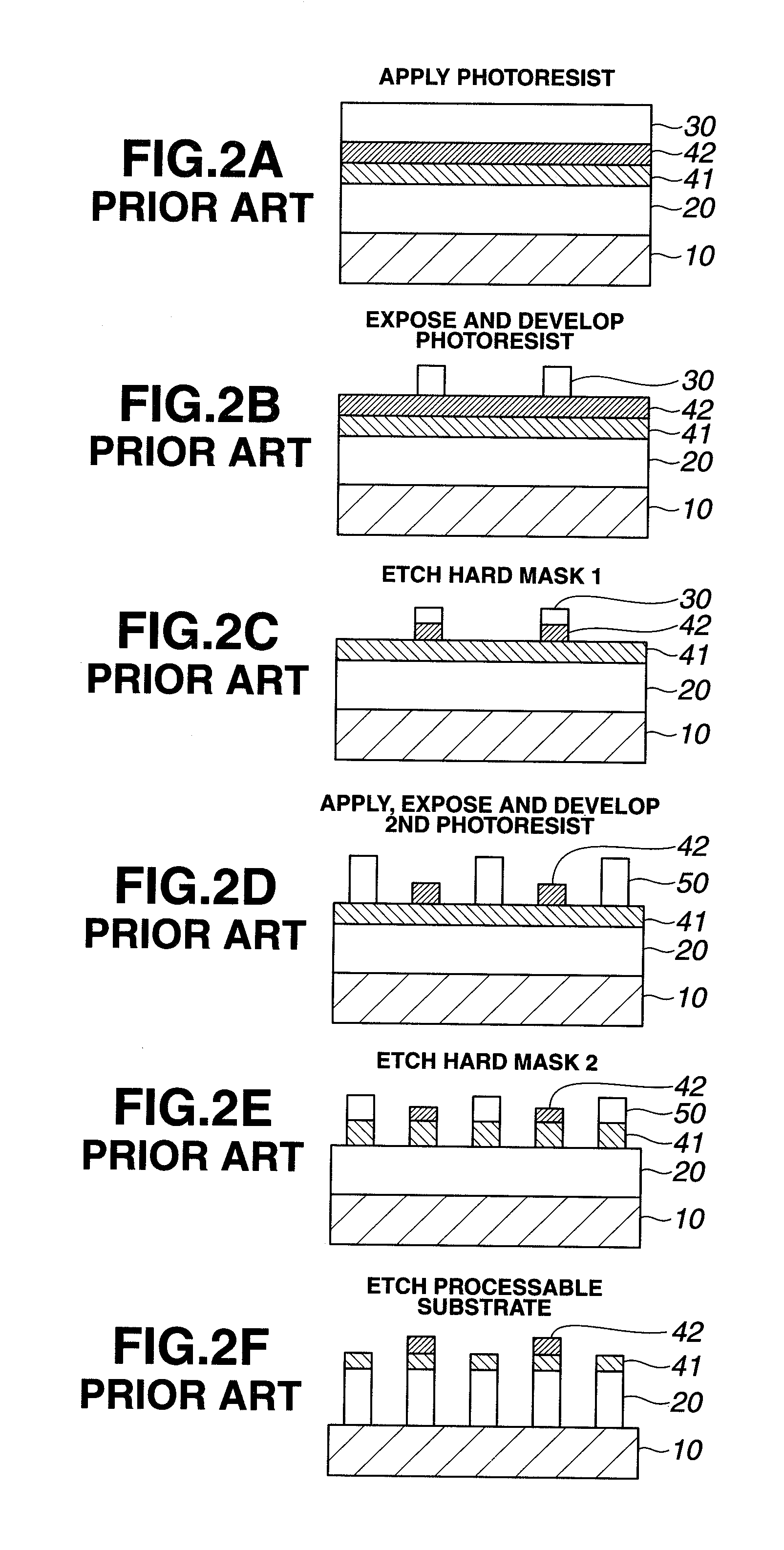Patterning process and pattern surface coating composition
a pattern surface and coating technology, applied in the field of double patterning process, can solve the problems of low resist etching resistance, high cost of scanner, and obviation of bubble generation risk
- Summary
- Abstract
- Description
- Claims
- Application Information
AI Technical Summary
Benefits of technology
Problems solved by technology
Method used
Image
Examples
example
[0220]Examples of the invention are given below by way of illustration and not by way of limitation. The abbreviations used herein are GPC for gel permeation chromatography, Mw for weight average molecular weight, Mn for number average molecular weight, Mw / Mn for molecular weight distribution or dispersity, NMR for nuclear magnetic resonance, PAG for photoacid generator, and TAG for thermal acid generator. For all polymers, Mw and Mn are determined by GPC versus polystyrene standards.
synthesis examples
[0221]Polymers (Polymers 1 to 17 and Comparative Polymer 1) for use in resist surface coating compositions were prepared by combining various monomers, effecting copolymerization reaction in tetrahydrofuran medium, crystallization in hexane, and drying. The polymers had the composition shown below. The composition of each polymer was analyzed by H-NMR, and the Mw and Mw / Mn determined by GPC.
PUM
| Property | Measurement | Unit |
|---|---|---|
| wavelength | aaaaa | aaaaa |
| size | aaaaa | aaaaa |
| wavelength | aaaaa | aaaaa |
Abstract
Description
Claims
Application Information
 Login to View More
Login to View More - R&D
- Intellectual Property
- Life Sciences
- Materials
- Tech Scout
- Unparalleled Data Quality
- Higher Quality Content
- 60% Fewer Hallucinations
Browse by: Latest US Patents, China's latest patents, Technical Efficacy Thesaurus, Application Domain, Technology Topic, Popular Technical Reports.
© 2025 PatSnap. All rights reserved.Legal|Privacy policy|Modern Slavery Act Transparency Statement|Sitemap|About US| Contact US: help@patsnap.com



